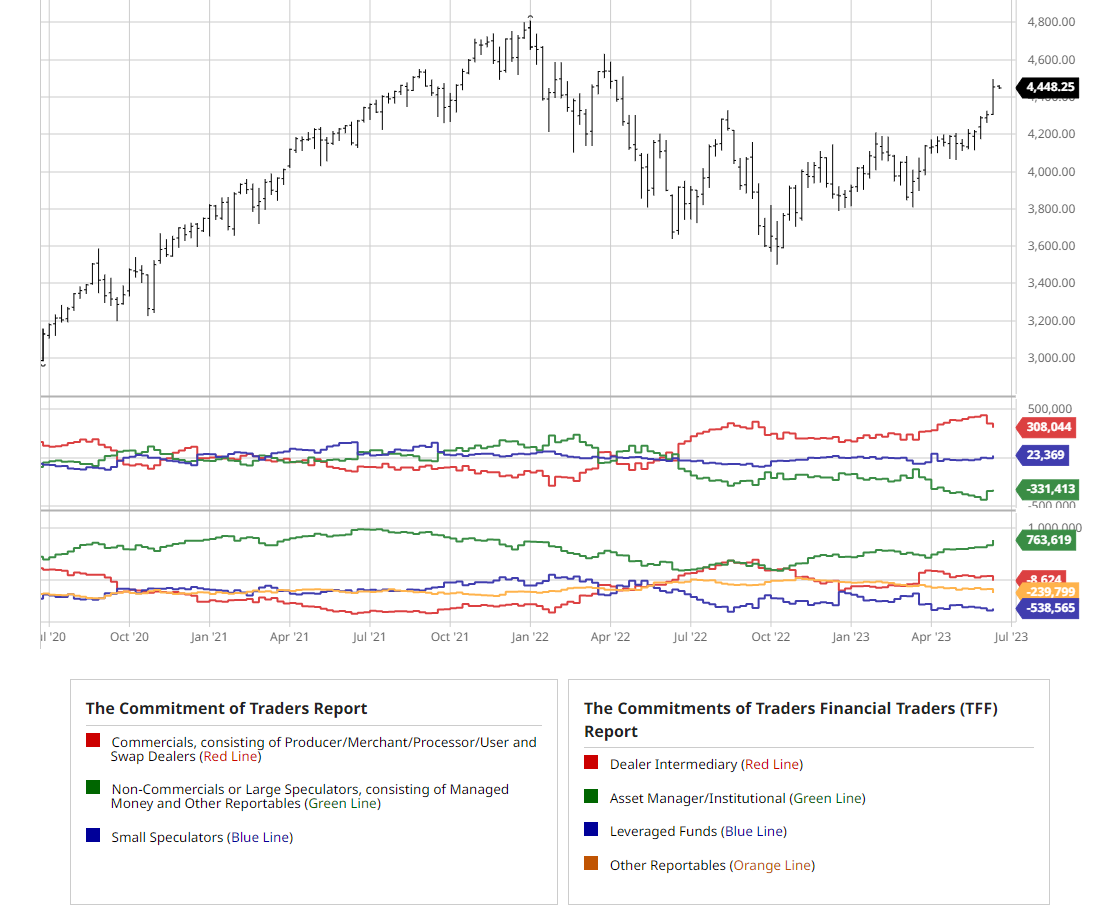COT Reports
Read Post
In this post we are going to talk about the Commitments of Traders (COT) report.
Contents:
Introduction
The Commitments of Traders (COT) report is a weekly report by the Commodity Futures Trading Commission (CFTC) and released every Friday 3:30pm EST reporting on the prior Tuesday.
Clearing members, Futures Commission Merchants (FCM), and reporting firms file daily reports with CFTC. Those reports show the futures and option positions of traders that hold large positions (above specific reporting levels by CFTC regulations). The total of all reportable positions usually represents 70% to 80% of the total open interest in any given futures market.
Picture taken from barchart.com:

Open Interest
Open interest is the total of all futures currently open that have not been offset by transaction or delivery. When including options (Combined-Long), the options are counted using a futures-equivalent method according to the options delta. For example if the trader is holding 500 contracts of 0.50 delta, it will be counted as 250 contracts.
Commercial/Non-Commercial Traders
Reportable traders are classified under Commercial or Non-Commercial Traders. Positions are classified under commercial if the future cotracts are used for hedging for the particular commodity. This is pretty much self-reporting but CFTC has the power to reclassify and also trader has incentive to classify under commercial due to reduce margin. A trader can be classified as both commercial and non-commercial under different commodities but never on the same commodity.
Nonreportable Positions
After accounting for Commercial and non-commercial positions from open-interest, the rest are categorize under nonreportable positions.
Disaggregated Commitment of Traders Report
Covering only major physical commodity markets, the Disaggregated COT report increases transparency from the legacy COT reports by separating traders into 4 categories:
Producer/Merchant/Processor/User
Primarily engages in the production, processing, packing or handling of a physical commodity and uses the futures markets to hedge risk.
Swap Dealer
Deals primarily in swaps for a commodity and uses the futures markets to hedge the risk associated with the swaps transactions. The swap dealers’ counterparties may be speculative traders or commercial clients managing their risk.
Managed Money
A registered commodity trading advisor (CTA), a registered commodity pool operator (CPO), or an unregistered fund identified by CFTC. These are traders trading on behalf of clients.
Other Reportables
The rest that are not classified under the above three.
Commitment of Traders Financial Futures (TFF) Report
Covering traders in the financial markets into 4 categories:
Dealer/Intermediary
The sell-side of the market. They will offset their risk and tend to have matched books. They include large banks and dealers in securities, swaps, and other derivatives.
Asset Manager/Insitutional
These are institutional investors including:
- Pension Funds
- Endowments
- Insurance Companies
- Mutual Funds
- Portfolio/Investment Managers
Leveraged Funds
Typically hedge funds and money managers such as CTA, and CPO. These could include outright positions or arbitrage positions and could be proprietary or trade on behalf of speculative clients.
Other Reportables
The rest that are not classified under the above three. They include traders that are using markets to hedge business, FX, equities or interest rates risk. They include:
- Corporate Treasuries
- Central Banks
- Small Banks
- Mortgage Originators
- Credit Unions
See Also
References
Commitments Of Traders (COT) Charts (barchart)
Why this Trader Remains Long Stocks - Jason Shapiro (Youtube)
